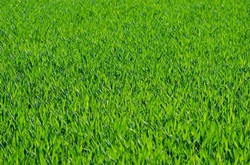The Best Worm Tea Recipe You'll Find
In a Nutshell: Easy – Simple – Effective
Worm castings tea doesn’t exactly sound like such an overwhelmingly tasty recipe, but plants sure love it. It's easy to make, easy to use, and provides a fast-acting tonic for plant growth. The nutrients in the tea are easily absorbed by plant roots or leaves and results can be seen in as little as 2-3 days. Some customers report that the tea also doubles as a natural pest repellent. The ingredient list is simple. Keep reading below, and you'll learn how to make worm tea in no time. Remember, organic fertilizer equals BETTER plant nutrition.
Buy natural worm castings online today!
A customer of ours from Illinois sent in this worm tea recipe which he swears is the best. In fact, the worm tea recipe below yielded plums the size of apples.
There are only 3 ingredients required:
- 3 lbs castings
- 5 gallons water
- 1/3 cup molasses
3 of his tips for the best brew:
- Keep it in a painting mesh or paint screen to not clog up the spray nozzle in case they don’t completely liquefy (TIP: a painting mesh is easier to use than a nylon mesh).
- Place a fish tank aerator inside to allow oxygen into the microbes.
- Let it sit (at least) overnight – 24 hours preferably, but 48 hours if the water is below 70 degrees.
If you have your own recipes you'd like to send in, contact our worm tea brewers today and pass along any tips!
How to Make Traditional Worm Castings Tea
This next one is the traditional brewing method for worm castings tea. It will produce 1 gallon of worm castings tea, which can then be diluted to make 2 gallons with no significant loss of potency. WARNING: we strongly advise you do not leave worm tea in the sun and/or heat, since this could create harmful microbes.
Ingredients Needed:
- 2-3 cups of worm castings
- 2 tablespoons of unsulphured molasses
- A bucket large enough to hold one gallon of water
Process:
- Fill your bucket with water. If you’re using tap water, you’ll need to let the water sit overnight so the chlorine can evaporate. (No point in having all those good micro-organisms in your worm castings killed off by chlorine!) If you don’t have the patience to wait 24 hours, use distilled water or rain water.
- OPTIONAL: Add 2 tablespoons of unsulphured molasses to the bucket and stir to dissolve. This will be food for the micro-organisms in your worm castings.
- Make a worm castings “teabag” out of pantyhose or other sheer material by filling it with 2/3 cup of worm castings and knotting it closed.
- Suspend the worm castings tea bag in the bucket of water and let soak for several hours (or overnight).
- Tea is served!* You can sprinkle the tea on your plants with a watering can or go high-tech with a sprayer. Best time of day to apply is morning or evening, when the sun isn’t beating down on the plants you’re fertilizing (avoid the sun and heat - they're bad for worm castings). The leftover castings in the tea bag can be scraped off onto the soil.
- Rinse out your “tea bag” and let it dry. You can use it for the next batch you brew!
Worm castings tea fertilizer can be used indoors or outdoors. In addition to pouring it on the ground around the plant you can also spray it directly on leaves with a sprayer.
Many indoor gardeners fill up a sprayer bottle and mist their houseplants with the tea. However you apply it, worm castings tea can have a near-miraculous effect on plants – especially ones that are struggling.
Making Worm Castings Tea: An Easy Recipe to Try
To make up a quick brew of worm castings tea, measure two teaspoons of worm castings from Dirt Dynasty into a quart of water. If you are using tap water, the water should sit out for 24 hours to let the chlorine evaporate. Otherwise, the chlorine in tap water will kill the beneficial micro-organisms in the worm castings.
If you are in a hurry, you can use distilled water or rain water you have already collected outside.
Add the worm castings to the water and stir, then let it sit somewhere for a day.
If you are planning to use the tea in a sprayer or mister, you will need to strain it through a fine mesh first. (Save what you strain out and put it in your flowerpots!) Otherwise, just pour the tea onto the soil around your plants. If you don’t want to deal with straining your tea, you can put the worm castings in an old pair of nylons (or other similarly sheer material), tie the end, and steep them tea bag-style in the water.
Diluting worm castings tea is a great way to extend your batch of tea without losing much of its potency. You can experiment with different amounts of dilution – adding the same amount of water you started with or just half that amount. This “lite” version of worm castings tea is terrific if you are working with bare-root transplants. Just set them in the tea for a while and they’ll be better able to withstand the shock of being replanted.
RELATED: Aerated Worm Tea Is the Super Fertilizer
Vermicast Tea Makes Grass Truly Greener
 Worm castings tea gives you the lush, green lawn you have always wanted without the harmful chemicals.
Worm castings tea gives you the lush, green lawn you have always wanted without the harmful chemicals.
You will need to brew at least a few gallons, and you will need a sprayer to get the tea onto your lawn. We recommend applying the tea early in the morning or late in the evening to avoid having the tea evaporate. You should also use up your tea within 24 hours.
As nature’s perfect NPK fertilizer, the nitrogen in worm castings is just what struggling lawns need. You should see your lawn respond in just a few days with a noticeable greening. Regular applications every two months will encourage stronger roots and lusher growth.
Hope you don’t mind mowing the grass more often!


